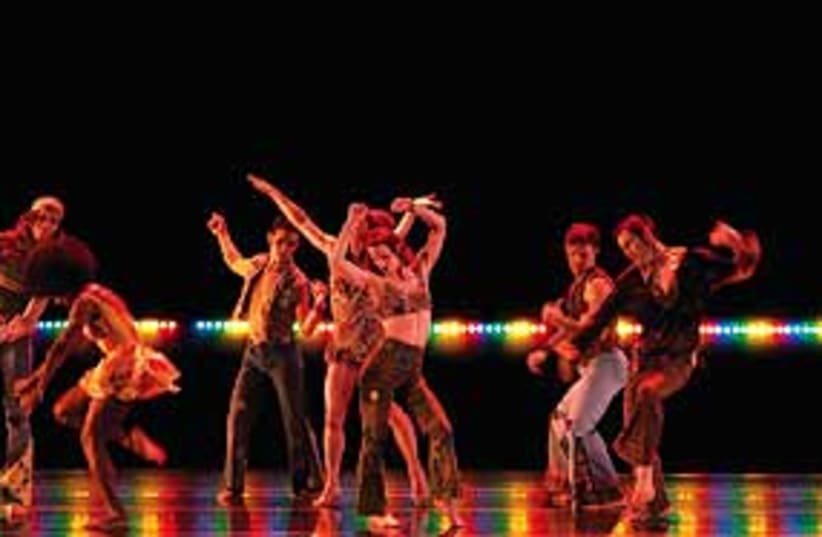Dance Company (USA)
Haifa Auditorium
April 28 Prolific, octogenarian dance-maker Paul Taylor has enjoyed an exceptionally long career. He is perhaps the last of the iconic pillars of American modern dance in the post-Martha Graham era. His dances always appealed to large audiences, who were attracted to the fluidity, musicality and easily digestible treatment of occasional social comment.Almost 20 years have passed since the company’s previous tour to Israel, and we still received typical Taylor materials ranging from the basic, rather simplistic and trivial to the sublime and sophisticated. The evening opened with Changes (2008)set to songs of The Mamas and the Papas, which, apart from “CaliforniaDreaming,” have limited appeal to begin with. The piece purports todepict the spirit of the ’60s, but without a grain of its truesocio-political complexity. Even the dancers looked a bit jaded, goingthrough the motions, leaning on stereotypical images. It also sufferedfrom its inner fragmented structure, set to a string of various tuneswhich left little room for in-depth treatment of its spatial, thematicor spiritual materials. Fortunately the evening picked up with Piazzolla Caldera(1997) and its superb musical rendition by Gidon Kremer. One cannotstay indifferent to Piazzolla’s pungent melodies and the company had achance to express its sensual, sassier side, while Taylor’s creativityseemed better focused.The surprising highlight of the evening, though – and one that left a favorable aftertaste – was Promethean Fire (2002). The work, one of the best produced by Taylor, achieved juxtaposed objectives – to go back and progress forward.Stylistically, it goes way back to the earlier sources of modern danceand reveals the traces of its roots as far as the aestheticism ofNijinska, and some postures that would have pleased Mary Wigman ofpre-war German expressionist dance.In a somber setting, elegant costumes and timeless music of JohannSebastian Bach, Taylor explores anew aspects of the neoclassicalapproach to more lucid group structures and values such as symmetry andother geometrical forms, and manages to evoke an earlier age whilesomehow producing a more relevant, age-defying creation.Taylor wasn’t marked as a ground-breaker in the true sense of the word,but as a master of pleasing, with rather safe, all-American moderndance. In that context, his Promethean Fire was a really beautiful, uplifting surprise.
